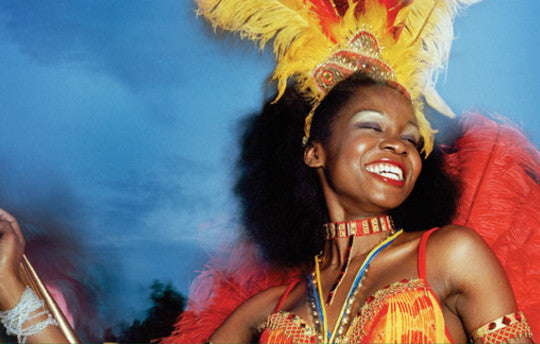Your Cart is Empty

Brazilian music is recognised globally, and yet its presence on the World Music scene is only just the tip of the iceberg. A cocktail of African, European and Indian ingredients underlies a national genius for music, creating a variety of rhythms and regional genres.
Música popular brasileira (MPB), is the catch-all term for Brazilian music. It refers to famous artistas and a rich tradition of regional music making. While many cities (Salvador de Bahia, Recife, Belém and São Paulo) have contributed to Brazilian music, any guide to Brazilian music has to start in Rio.
Rio is the birthplace of choro, literally “crying, sobbing”, which was the original Carnaval music. It is mainly instrumental, played by a small combo that might include flute, guitar, cavaquinho (Portuguese guitar) and clarinet.
It is rooted in European rhythms overlaid with Afro-Brazilian syncopation. Pixinguinha, the most influential composer of choro, was one of the inspirations for the famous Brazilian classical composer, Heitor Villa-Lobos.
Choro has recently seen a revival after decades of neglect thanks to the sambista Paulinho da Viola.
The choro syncopation soon carried over into samba. Samba de enredo is the mass Carnaval music famous the world over. Slowed down it becomes samba-canção, “song samba”. Samba-canção is the staple of Rio’s clubs and dancetarías and breaks down into several varieties. The current national craze is samba da garrafa, an uptempo brand of samba.
Bossa nova began in Rio’s neighborhoods of Ipanema and Copacabana. Tom Jobim single handedly invented bossa nova but it was first sung by Bahian João Gilberto. By 1959, it took off abroad and Astrud Gilberto’s English version of “The Girl from Ipanema” became Brazil’s biggest international hit.
Bossa nova’s international craze was eventually eclipsed, but it still survived back home. A recent revival in New York has been headed by Arto Lindsay and Vinicius Cantuária.
African influences are everywhere in Salvador. The importance of drumming and percussion of Salvador’s music reflects these influences.
In the 1970s, a wave of black consciousness inspired by American soul music transformed the city’s Carnaval. Later, reggae was absorbed and the result was a new Salvador sound by the late 1980s. A new generation of young stars from the city included Margareth Menezes, Luiz Caldas, Banda Mel, Ara Ketú and Olodum.
In the 1990s Timbalada took the sound further and began fusing the heavy percussion with rock-funk elements.
Music from northeastern Brazil has many forms including frevo, maracatú, baião and forró, but all are influenced by Portuguese folk melodies. The rhythms are strong but slow and the beat often comes from the accordion or guitar. Lyrics are sung in a gravelly, nasal nordestino accent.
Forró is the most popular variety and is accordion-led with a robust and frenetic sound. Luiz Gonzaga is considered the first big name of forró. He blazed a trail for other musicians including Elba Ramalho, Morães Moreira, Geraldo Azevedo and Fagner.
Amazonia: Lambada and Boi
Eastern Amazonia is home of the dance style carimbó. By the mid-1970s, DJs started playing with carimbó rhythms, adding elements of merengue, salsa and reggae, producing lambada.
The most recent musical craze from northern Brazil is boi: a rhythmic, percussive style of music. In the 1990s, boi was transformed into a poppy, electrified dance music.
After the military coup of 1964, the new regime imposed censorship on music and persecuted musicians. Despite the military’s restrictions, tropicalismo emerged as a musical movement in the 1960s. The most notable musicians were Caetano Veloso and Gilberto Gil. The movement only lasted a couple of years, ending when Caetano and Gil were exiled. The censorship restrictions were relaxed in 1985.
The 1960s saw the emergence of two stars that were not part of the tropicalismo wave: Chico Buarque and Milton Nascimento. Buarque is known for his superb quality lyrics and Nascimento has a dense sound that made him one of the best-known Brazilian musicians abroad.
Elis Regina burst onto the scene in 1965 when she was only eighteen and sang a unique blend of technique and soul. However, she struggled with drugs and eventually died of an overdose in 1982.
Brazilian music lacks young blood replacing the towering figures of the 1960s who continue to produce high-quality music. However, there are more studios and independent labels than before and regional music is as strong as ever.
 With an entertainment industry not much smaller than the United States, the scope of Brazil's musical jewels is often overlooked due to a worldwide fixation on sixties bossa nova and samba. The Rough Guide To The Music Of Brazil (Second Edition) is a musical journey through this exquisite part of the world, exploring national and regional styles from past to present-day. A dynamic collection guaranteed to spur you on to the dancefloor.
With an entertainment industry not much smaller than the United States, the scope of Brazil's musical jewels is often overlooked due to a worldwide fixation on sixties bossa nova and samba. The Rough Guide To The Music Of Brazil (Second Edition) is a musical journey through this exquisite part of the world, exploring national and regional styles from past to present-day. A dynamic collection guaranteed to spur you on to the dancefloor.You can now study these genres through our partner site World Music Method. Click HERE to view the list of courses.